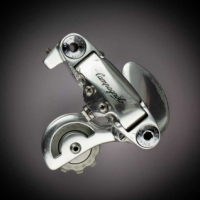Seemingly trivial things that annoy you
Comments
-
Baths that don't have handles to help me get in and out!- Genesis Croix de Fer
- Dolan Tuono0 -
Ours is, for me at any rate, got an extra long and deep bath. Unfortunately the trouble complains her toes don't reach the end and she winds up bobbing about.Tashman said:
Just Baths really, they're never big enough to comfortably fit inpangolin said:Baths that don't have handles to help me get in and out!
0 -
Did Andy use a similar sized bath?veronese68 said:
Ours is, for me at any rate, got an extra long and deep bath. Unfortunately the trouble complains her toes don't reach the end and she winds up bobbing about.Tashman said:
Just Baths really, they're never big enough to comfortably fit inpangolin said:Baths that don't have handles to help me get in and out!
This is the hard hitting questions the Telegraph should ask. 😉The above may be fact, or fiction, I may be serious, I may be jesting.
I am not sure. You have no chance.Veronese68 wrote:PB is the most sensible person on here.0 -
Big baths take too long to fill up.veronese68 said:
Ours is, for me at any rate, got an extra long and deep bath. Unfortunately the trouble complains her toes don't reach the end and she winds up bobbing about.Tashman said:
Just Baths really, they're never big enough to comfortably fit inpangolin said:Baths that don't have handles to help me get in and out!
0 -
rick_chasey said:
Big baths take too long to fill up.veronese68 said:
Ours is, for me at any rate, got an extra long and deep bath. Unfortunately the trouble complains her toes don't reach the end and she winds up bobbing about.Tashman said:
Just Baths really, they're never big enough to comfortably fit inpangolin said:Baths that don't have handles to help me get in and out!
Any-sized bath takes too long to fill up with a multipoint. I've probably had about a dozen baths in 30 years in Topsham, and none in ten years in France, as I've only got a shower there. If I'm in a hotel, I might just have a bath if I can be bothered to waste the time, but I get bored after about 5 minutes of soaking, so it just seems like a waste.
0 -
Weather forecasters saying things like: "And tomorrow's temperature will be four to six degrees". When I heard it the other day, it sounded like she said "forty six degrees".
If she would have said: And tomorrow's temperature will be between four and six degrees", I would have been more comfortable with it.0 -
-
Seems ^ perfectly within regulation.de_sisti said:Weather forecasters saying things like: "And tomorrow's temperature will be four to six degrees". When I heard it the other day, it sounded like she said "forty six degrees".
If she would have said: And tomorrow's temperature will be between four and six degrees", I would have been more comfortable with it.seanoconn - gruagach craic!0 -
de_sisti said:
Weather forecasters saying things like: "And tomorrow's temperature will be four to six degrees". When I heard it the other day, it sounded like she said "forty six degrees".
If she would have said: And tomorrow's temperature will be between four and six degrees", I would have been more comfortable with it.
I had the same thing with time, once: telling a fellow musician that the rehearsal would be "10 to 1", getting a really weird look back, then the comment that "That's a bit precise, isn't it?", then the realisation that I meant 10am until 1pm.
I was so pleased with myself one time for immediately hearing, at a French supermarket till, "Quatre-vingt-sept" and getting that it was 87...
...then thinking that that seemed really cheap, and twigging that the bästard had fooled me by missing out one crucial word... quatre *euros*, vingt-sept.
0 -
Of course not! It has zero quantum mechanics on it...pinno said:
I read something to that effect about 10 years ago, either in a technical F1 forum or at the official F1 website, which was then confirmed with google's help. I am negatively surprised it's still there for the 2026 regulations.0 -
I am struggling to see where your objection comes from.drhaggis said:
Of course not! It has zero quantum mechanics on it...pinno said:
I read something to that effect about 10 years ago, either in a technical F1 forum or at the official F1 website, which was then confirmed with google's help. I am negatively surprised it's still there for the 2026 regulations.
Presumably somewhere along the line, someone has tried rounding down to 3.14 to get a slightly larger engine capacity.
And before anyone queries, this is exactly how it would work, to justify a larger dispacement and compression ratio.0 -
I am sure that there are no regs regarding compression ratios but yes, what would be the leeway with pi; to how many decimal places?
pi: 3.14159265359seanoconn - gruagach craic!0 -
No, the point being is that if you round Pi down, you under calculate overall displacement. The aim of which, all other things being equal, is to also increase compression ratio.pinno said:I am sure that there are no regs regarding compression ratios but yes, what would be the leeway with pi; to how many decimal places?
pi: 3.14159265359
Lowering pi is a lot easier than redesigning the cylinder head.0 -
Is pi 3.14? No. Should that team be disqualified for building oversized engines? Probably.First.Aspect said:
I am struggling to see where your objection comes from.drhaggis said:
Of course not! It has zero quantum mechanics on it...pinno said:
I read something to that effect about 10 years ago, either in a technical F1 forum or at the official F1 website, which was then confirmed with google's help. I am negatively surprised it's still there for the 2026 regulations.
Presumably somewhere along the line, someone has tried rounding down to 3.14 to get a slightly larger engine capacity.
And before anyone queries, this is exactly how it would work, to justify a larger dispacement and compression ratio.
My objection is that there is zero reason to force a rational value of Pi. The value that's been on pocket calculators since the 70's is more than good enough. And before you complain about poinless precision and errors, the manufacturing process is going to have an error. The FIA measuring process is going to have an error of what, 0.01 mm? On something measuring about 100 mm? There you have it, pi to 8 s.f and no longer an issue.
Next I know, 1/3 = 0.3333. By that logic, 3/3 is not 1 anymore...0 -
Well there literally is a reason to force a rational value as explained above, and its the same as many other of the F1 rules - cheating.drhaggis said:
Is pi 3.14? No. Should that team be disqualified for building oversized engines? Probably.First.Aspect said:
I am struggling to see where your objection comes from.drhaggis said:
Of course not! It has zero quantum mechanics on it...pinno said:
I read something to that effect about 10 years ago, either in a technical F1 forum or at the official F1 website, which was then confirmed with google's help. I am negatively surprised it's still there for the 2026 regulations.
Presumably somewhere along the line, someone has tried rounding down to 3.14 to get a slightly larger engine capacity.
And before anyone queries, this is exactly how it would work, to justify a larger dispacement and compression ratio.
My objection is that there is zero reason to force a rational value of Pi. The value that's been on pocket calculators since the 70's is more than good enough. And before you complain about poinless precision and errors, the manufacturing process is going to have an error. The FIA measuring process is going to have an error of what, 0.01 mm? On something measuring about 100 mm? There you have it, pi to 8 s.f and no longer an issue.
Next I know, 1/3 = 0.3333. By that logic, 3/3 is not 1 anymore...
I can't think of a scanario where 1/3 would cause an issue, but perhaps Adrian Newey just hasn't thought of where to use it yet.0 -
You lot will never make mathematicians. Just quote the min/max/whatever volume in π. I assumed this was drhaggis's objection. I'm now disappointed.1
-
As much as I would like to agree, someone will have been caught with a 3.05L engine or something like that, and used a misleading calculation to try to get off the hook. They'll have been found in breach of the regs, unless it was Ferrari, and they will have closed of the rule the following year.TheBigBean said:You lot will never make mathematicians. Just quote the min/max/whatever volume in π. I assumed this was drhaggis's objection. I'm now disappointed.
If it was Ferrari they'll have just been asked nicely over dinner not to do it again. And to pay for dinner.0 -
I think it's Red Bull who do most of the spending on big dinners....First.Aspect said:
As much as I would like to agree, someone will have been caught with a 3.05L engine or something like that, and used a misleading calculation to try to get off the hook. They'll have been found in breach of the regs, unless it was Ferrari, and they will have closed of the rule the following year.TheBigBean said:You lot will never make mathematicians. Just quote the min/max/whatever volume in π. I assumed this was drhaggis's objection. I'm now disappointed.
If it was Ferrari they'll have just been asked nicely over dinner not to do it again. And to pay for dinner.1 -
'The aim... is to also increase the compression ratio.' ?First.Aspect said:
No, the point being is that if you round Pi down, you under calculate overall displacement. The aim of which, all other things being equal, is to also increase compression ratio.pinno said:I am sure that there are no regs regarding compression ratios but yes, what would be the leeway with pi; to how many decimal places?
pi: 3.14159265359
Lowering pi is a lot easier than redesigning the cylinder head.
You're nuts.
The aim... is to increase displacement.
You alter compression ratios by what is most mechanically efficient, fuel efficient and (in F1) what produces the most power.
Simply increasing the compression ratio will not increase power. You have the durability of the engine to consider. The higher the compression, the higher the forces. There are multiple factors.
You alter compression by altering the length of the con rod/crank shaft lobes.
You alter the displacement by altering cylinder size/cylinder head capacity - that's the argument.
F1 engines use compression ratios around 12-13:1 (max 17:1 as per wiki) as F1 engines use very short strokes it is difficult to reach a high compression without blocking the combustion chamber and the flow around the valves.
If you could increase the compression ratio at will then they would be 50:1, 60:1 who knows? Ultra ultra lean burn too!
We could have engines running 2000 miles on just one tank of your methanous farts.
seanoconn - gruagach craic!0 -
I'm just explaining a complex issue by saying "all other factors being equal". Give your thumbs a rest.pinno said:
'The aim... is to also increase the compression ratio.' ?First.Aspect said:
No, the point being is that if you round Pi down, you under calculate overall displacement. The aim of which, all other things being equal, is to also increase compression ratio.pinno said:I am sure that there are no regs regarding compression ratios but yes, what would be the leeway with pi; to how many decimal places?
pi: 3.14159265359
Lowering pi is a lot easier than redesigning the cylinder head.
You're nuts.
The aim... is to increase displacement.
You alter compression ratios by what is most mechanically efficient, fuel efficient and (in F1) what produces the most power.
Simply increasing the compression ratio will not increase power. You have the durability of the engine to consider. The higher the compression, the higher the forces. There are multiple factors.
You alter compression by altering the length of the con rod/crank shaft lobes.
You alter the displacement by altering cylinder size/cylinder head capacity - that's the argument.
F1 engines use compression ratios around 12-13:1 (max 17:1 as per wiki) as F1 engines use very short strokes it is difficult to reach a high compression without blocking the combustion chamber and the flow around the valves.
If you could increase the compression ratio at will then they would be 50:1, 60:1 who knows? Ultra ultra lean burn too!
We could have engines running 2000 miles on just one tank of your methanous farts.
0 -
The thing is, 3.1416 is not even exactly representable in binary. It's just a poor choice.First.Aspect said:
Well there literally is a reason to force a rational value as explained above, and its the same as many other of the F1 rules - cheating.drhaggis said:
Is pi 3.14? No. Should that team be disqualified for building oversized engines? Probably.First.Aspect said:
I am struggling to see where your objection comes from.drhaggis said:
Of course not! It has zero quantum mechanics on it...pinno said:
I read something to that effect about 10 years ago, either in a technical F1 forum or at the official F1 website, which was then confirmed with google's help. I am negatively surprised it's still there for the 2026 regulations.
Presumably somewhere along the line, someone has tried rounding down to 3.14 to get a slightly larger engine capacity.
And before anyone queries, this is exactly how it would work, to justify a larger dispacement and compression ratio.
My objection is that there is zero reason to force a rational value of Pi. The value that's been on pocket calculators since the 70's is more than good enough. And before you complain about poinless precision and errors, the manufacturing process is going to have an error. The FIA measuring process is going to have an error of what, 0.01 mm? On something measuring about 100 mm? There you have it, pi to 8 s.f and no longer an issue.
Next I know, 1/3 = 0.3333. By that logic, 3/3 is not 1 anymore...
I can't think of a scanario where 1/3 would cause an issue, but perhaps Adrian Newey just hasn't thought of where to use it yet.0 -
I am aware of that but you are mixing things up as if there is direct correlation between compression ratio's and displacement.First.Aspect said:
I'm just explaining a complex issue by saying "all other factors being equal". Give your thumbs a rest.
You can have small capacity engines with low compression.
You can have high capacity engines with high compression.
seanoconn - gruagach craic!0 -
Uh huh. Did I say it was direct? Or did I say exactly not that.pinno said:
I am aware of that but you are mixing things up as if there is direct correlation between compression ratio's and displacement.First.Aspect said:
I'm just explaining a complex issue by saying "all other factors being equal". Give your thumbs a rest.
You can have small capacity engines with low compression.
You can have high capacity engines with high compression.0 -
1985 Mercian King of Mercia - work in progress (Hah! Who am I kidding?)
Pinnacle Monzonite
Part of the anti-growth coalition0 -
I thought a pie bill was when you had to pay for your Ginsters1
-
I came to see what’s annoying and just got confused. Why would someone need to represent 3.1416 in binary ?drhaggis said:
The thing is, 3.1416 is not even exactly representable in binary. It's just a poor choice.First.Aspect said:
Well there literally is a reason to force a rational value as explained above, and its the same as many other of the F1 rules - cheating.drhaggis said:
Is pi 3.14? No. Should that team be disqualified for building oversized engines? Probably.First.Aspect said:
I am struggling to see where your objection comes from.drhaggis said:
Of course not! It has zero quantum mechanics on it...pinno said:
I read something to that effect about 10 years ago, either in a technical F1 forum or at the official F1 website, which was then confirmed with google's help. I am negatively surprised it's still there for the 2026 regulations.
Presumably somewhere along the line, someone has tried rounding down to 3.14 to get a slightly larger engine capacity.
And before anyone queries, this is exactly how it would work, to justify a larger dispacement and compression ratio.
My objection is that there is zero reason to force a rational value of Pi. The value that's been on pocket calculators since the 70's is more than good enough. And before you complain about poinless precision and errors, the manufacturing process is going to have an error. The FIA measuring process is going to have an error of what, 0.01 mm? On something measuring about 100 mm? There you have it, pi to 8 s.f and no longer an issue.
Next I know, 1/3 = 0.3333. By that logic, 3/3 is not 1 anymore...
I can't think of a scanario where 1/3 would cause an issue, but perhaps Adrian Newey just hasn't thought of where to use it yet.0 -
You tripped over your own words.First.Aspect said:
Uh huh. Did I say it was direct? Or did I say exactly not that.pinno said:
I am aware of that but you are mixing things up as if there is direct correlation between compression ratio's and displacement.First.Aspect said:
I'm just explaining a complex issue by saying "all other factors being equal". Give your thumbs a rest.
You can have small capacity engines with low compression.
You can have high capacity engines with high compression.
...and FWIW, my thumbs don't do a lot; they only press the space bar occasionally.seanoconn - gruagach craic!0 -
In case someone wanted to do normal operations in a computer (i.e. floating point arithmetic).mully79 said:
I came to see what’s annoying and just got confused. Why would someone need to represent 3.1416 in binary ?drhaggis said:
The thing is, 3.1416 is not even exactly representable in binary. It's just a poor choice.First.Aspect said:
Well there literally is a reason to force a rational value as explained above, and its the same as many other of the F1 rules - cheating.drhaggis said:
Is pi 3.14? No. Should that team be disqualified for building oversized engines? Probably.First.Aspect said:
I am struggling to see where your objection comes from.drhaggis said:
Of course not! It has zero quantum mechanics on it...pinno said:
I read something to that effect about 10 years ago, either in a technical F1 forum or at the official F1 website, which was then confirmed with google's help. I am negatively surprised it's still there for the 2026 regulations.
Presumably somewhere along the line, someone has tried rounding down to 3.14 to get a slightly larger engine capacity.
And before anyone queries, this is exactly how it would work, to justify a larger dispacement and compression ratio.
My objection is that there is zero reason to force a rational value of Pi. The value that's been on pocket calculators since the 70's is more than good enough. And before you complain about poinless precision and errors, the manufacturing process is going to have an error. The FIA measuring process is going to have an error of what, 0.01 mm? On something measuring about 100 mm? There you have it, pi to 8 s.f and no longer an issue.
Next I know, 1/3 = 0.3333. By that logic, 3/3 is not 1 anymore...
I can't think of a scanario where 1/3 would cause an issue, but perhaps Adrian Newey just hasn't thought of where to use it yet.0












